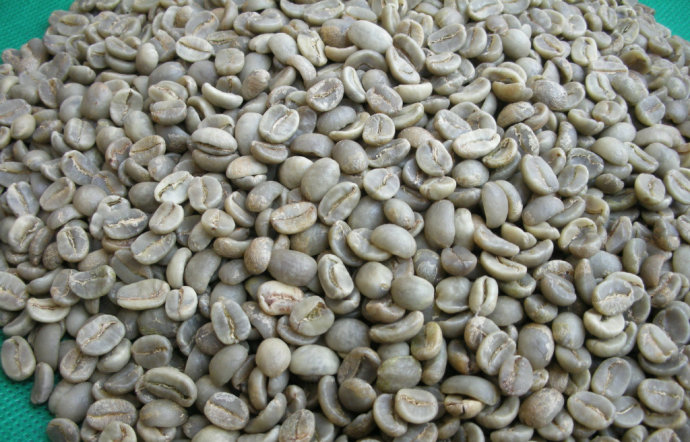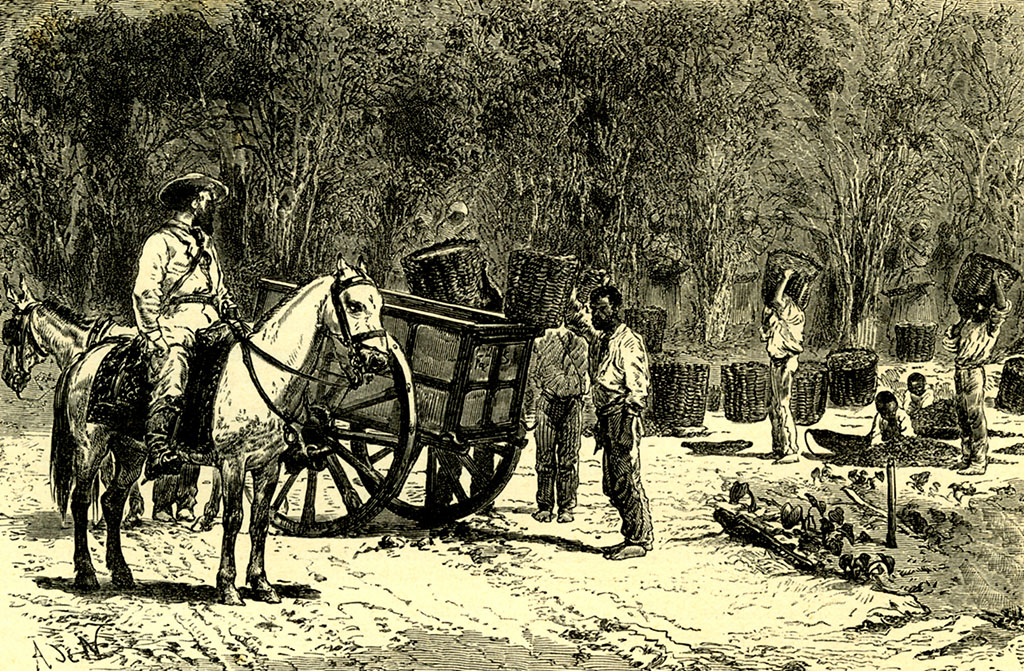The treatment process from Coffee Fruit to Coffee Raw beans after picking Coffee Fruit
There are a pair of oval seeds in the center of the coffee fruit, which are covered with outer skin, endocarp and pulp. Ripe fruits rot in a short period of time without treatment, so the purpose of refining is to preserve coffee beans for a long time so that they can be stored and circulated. Refining is to remove the skin and pulp of the coffee fruit, and then take out the seeds.
There are generally three kinds of refining methods: drying type, water washing type, and semi-washing type.
Today, let's talk about the drying refining method.
After the fruit is harvested, it needs to be dried by natural sun drying or machine drying to remove the shell and take out the raw beans. The natural drying method is to spread the fruit in an open sun field and dry it in the sun. In order to avoid uneven drying or fermentation, it must be stirred at the right time. The number of days in the sun depends on the maturity of the fruit. It takes only a few days for those with high maturity and 1-2 weeks for immature fruits.
The original cherry-like red fruit will turn black after a week in the sun, and the skin and flesh will become hard and easy to go down. At night, cover with a tarp to block the night dew and turn it into a black "dried cherry". If it is dried smoothly, the water content can reach 11% 12%, and the water content of raw coffee beans for export is 12% 13%.
The natural drying method has the advantages of simple operation process, low equipment investment and relatively low cost, so this method has been adopted by almost all producing countries in the past. But because this refining method is subject to weather conditions and takes a long time, with the exception of Brazil, Ethiopia, Yemen, Bolivia, Paraguay and other countries, almost all Arabica coffee producers have switched to washing refining.
There is a reason why Brazil still uses natural drying. First of all, he does not have enough water to cope with the large-scale coffee bean refining process, and secondly, Brazil's unique broad and flat terrain is also suitable for large-scale production by natural drying. However, Bashiya in northeastern Brazil began to use water washing to refine, producing highly refined coffee with few defective beans. The disadvantage of natural drying is that it is easy to mix too many defective beans or other impurities. Only in terms of the appearance of coffee beans, it is clear at a glance which is better than the natural drying method or the washing refining method.
When it comes to Yemen, you will think of the most famous Moqa Matali in Yemen, which has a unique sour taste and mellow thickness. This is an outstanding example of natural drying, which, like Mantenin in Sumatra, has irregular appearance and too many impurities. Originally, when it comes to Ethiopia, the best-known coffee is Harald coffee, but recently there has been an increase in Ethiopian water-washed coffee beans.
Source: happy Coffee Xiao Xu's blog
Important Notice :
前街咖啡 FrontStreet Coffee has moved to new addredd:
FrontStreet Coffee Address: 315,Donghua East Road,GuangZhou
Tel:020 38364473
- Prev

The difference between Coffee Bean washing and semi-washing
The washing refining of coffee began in the mid-18th century. In the refining process, the pulp of the coffee fruit is first removed, then the residual mucous membrane on the inner pericarp is removed by a fermentation tank, and the beans are washed and dried. The difference between non-washing refining and water-washing refining is that the non-washing refining method is dried and then the pulp is removed, while the washing method is to remove the pulp and then dry! Washing type refining
- Next

The origin of coffee how much do you know about the history of coffee? The History and Story of Coffee
There are many legends about the discovery of coffee, one of which is that according to Roth de Neroy (1613-1707), a Roman linguist, Caldai, an Arab shepherd, was herding sheep to the Isobian prairie one day around the sixth century A.D., and he was surprised to see that each goat was extremely excited and excited. He felt very strange. After careful observation, he found that these sheep were eating.
Related
- Beginners will see the "Coffee pull flower" guide!
- What is the difference between ice blog purified milk and ordinary milk coffee?
- Why is the Philippines the largest producer of crops in Liberia?
- For coffee extraction, should the fine powder be retained?
- How does extracted espresso fill pressed powder? How much strength does it take to press the powder?
- How to make jasmine cold extract coffee? Is the jasmine + latte good?
- Will this little toy really make the coffee taste better? How does Lily Drip affect coffee extraction?
- Will the action of slapping the filter cup also affect coffee extraction?
- What's the difference between powder-to-water ratio and powder-to-liquid ratio?
- What is the Ethiopian local species? What does it have to do with Heirloom native species?

